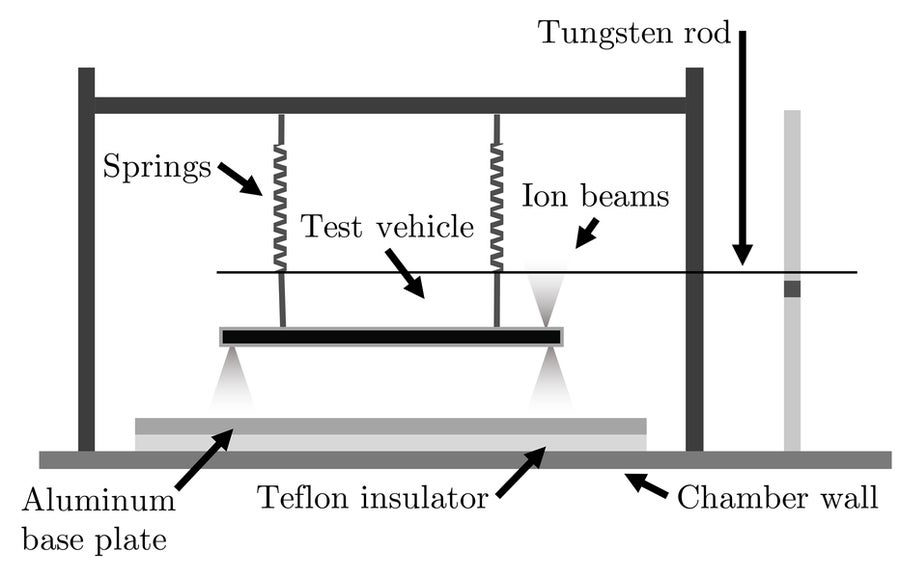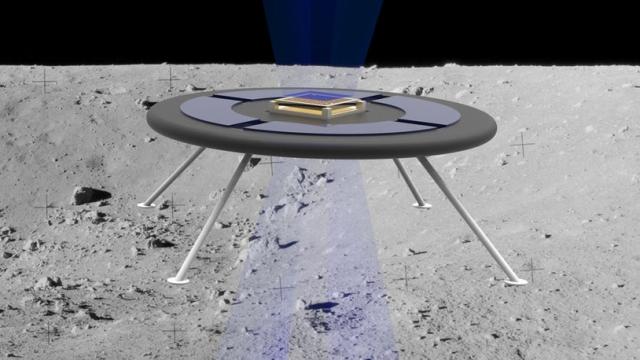Attempts at recreating the hoverboards seen in Back to the Future II have so far been either disappointing self-balancing, two-wheeled vehicles that frequently catch fire, or jet-powered floating platforms that require a highly skilled pilot. But as MIT engineers have recently proposed, creating a levitating vehicle might not be so difficult if we all just lived on the moon.
Most of the highly manoeuvrable flying vehicles that have been created thus far are completely dependent on Earth’s atmosphere to take to the skies. The wings of planes need air to generate lift, while propellers need air to generate thrust. Rockets don’t need an atmosphere to propel themselves or a craft — that’s how we were able to send humans to the moon and return them safely to Earth — but as reusable vehicles they require considerable servicing and refuelling efforts after a flight before they can be used again.
This is why we tend to rely on wheeled vehicles for exploring other celestial bodies that don’t have enough of an atmosphere to support flight. But a rover endures a lot of wear and tear rolling across a barren, rocky terrain, even when operated at limited speeds for safety reasons. Taking to the skies, as the Ingenuity helicopter on Mars can, is a safer way to explore another planet or celestial objects like asteroids at higher speeds to greatly increase their range of exploration, but that’s not an option on places like the moon.
Not having an atmosphere isn’t necessarily a problem, and, in fact, could actually be an advantage. It leaves the surface of the moon directly exposed to the sun, which causes it to build up an electric field that’s strong enough to make dust particles actually float (not unlike the effects of static electricity on the hair of a volunteer at a science centre). The surface charges aren’t quite strong enough to keep a tiny, lightweight aircraft afloat against the pull of the moon’s gravity, but MIT engineers have come up with another approach to “generate a relatively large repulsive force between the vehicle and the ground” that could allow a rover as heavy as 1 kg to levitate across the lunar surface.
Getting a larger craft to levitate on the moon would rely on a two-part strategy. The first would be equipping the vehicle with miniature ion thrusters connected to a reservoir of room temperature molten salt. When a small voltage is applied to the molten salt, “the liquid’s ions are charged and emitted as a beam through the nozzles with a certain force.” It’s an idea that’s already been used to propel small spacecraft in space where gravitational forces are minimal. To make a small craft levitate over the surface of the moon, which still experiences one-sixth of the gravity of Earth, the MIT engineers crunched the numbers and concluded that additional thrusters could be added to shoot out positive ions which would increase the electrical charge of the moon’s surface, and, in turn, generate a stronger force pushing up against the levitating rover.

A minimal amount of power would be needed to levitate a 1 kg rover roughly one centimeter above the moon’s surface, and to test the idea, the researchers created a lightweight (about 60 grams) palm-sized test vehicle in a lab with one ion thruster pointing up to simulate the moon’s gravity, four pointing down to counteract it, and other components, including two springs “calibrated to counteract Earth’s gravitational force,” to best recreate the conditions on the moon. The results of the experiment matched the expected theoretical outcomes, but the researchers believe a levitating rover powered this way could potentially float even higher, or potentially be built heavier with additional scientific instrumentation on board.
The ultimate goal is to come up with a rover that takes advantage of the unique conditions on moons and asteroids in our solar system to make it easier to explore and manoeuvre over unknown terrains by simply floating right over them — eliminating the added complications of wheeled vehicles altogether. Does it mean that if and when astronauts return to the moon they’ll be zipping from crater to crater on hoverboards? Levitating a two-pound rover is a considerably easier task than lifting a 82 kg astronaut wearing a 127 kg space suit, but this new approach has yet to be actually tested on our celestial neighbour, so it remains to be seen just how far the technology could be pushed. What we do know is that there are at least no large bodies of water on the moon to foil an exciting hoverboard chase.
